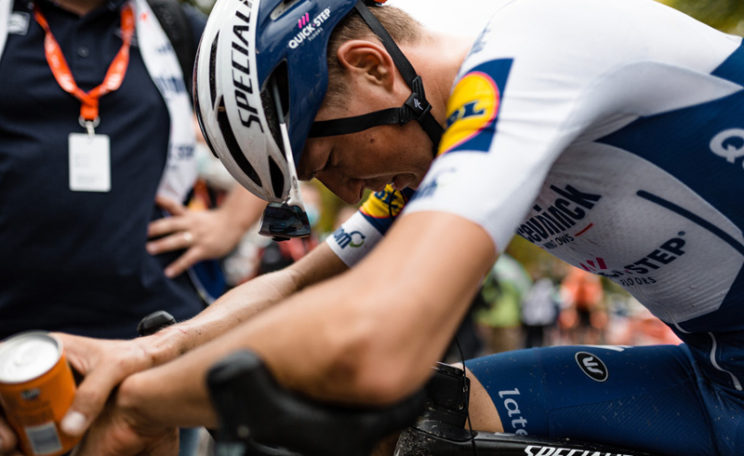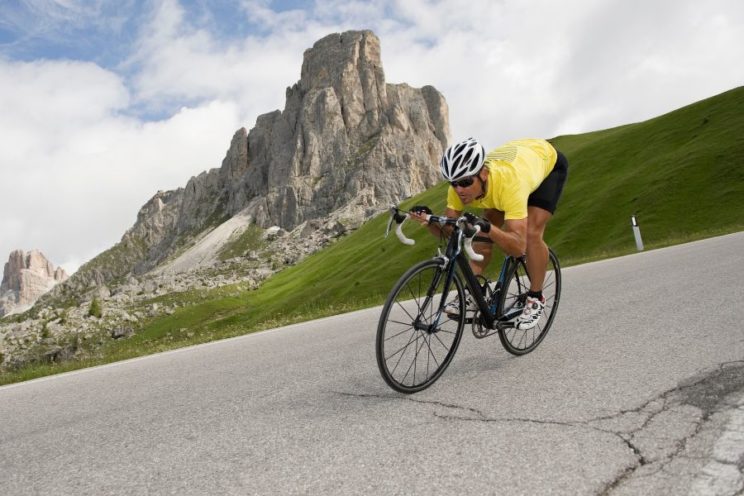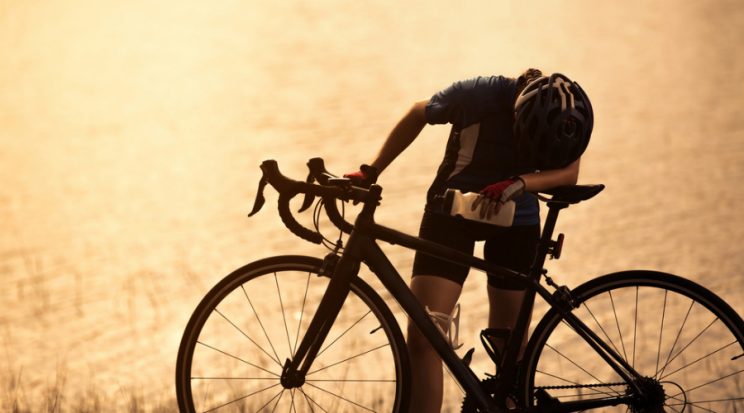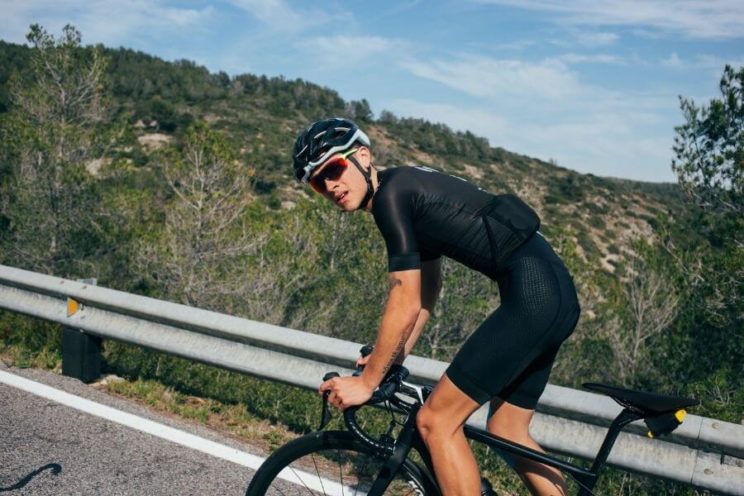Surely this sounds to you: you will go out to ride by bike, you look out the window and it seems that the trees out there will come out. But you have to go to pedal; Stay at home is not an option.
Let's see how we can live with the wind when rolling with the bike on the road. Without a doubt, one of the meteorological phenomena with the worst reputation among cyclists; Especially, if you blow against.
Learn to live with the wind
Learning to manage this situation is important. If you live in Spain, there are extensive areas of the Peninsula where the wind is usually common. In a city like Zaragoza, for example, the wind blows for more than 200 days. Almost nothing...
The face wind is an authentic annoyance. Until the toughest escalation has an end, but the wind can hinder your training for days and days. Even on a peaceful day, a section of wind against can become torture.
To get an idea, let's give an example.
Imagine that wheels on flat and calm terrain at a speed of 25 km/h. Imagine now that a wind raises against 15 km/h. Nothing exceptional, the typical breeze that shakes the flags. To reach the same speed, the effort you must make is equivalent to ascending a slope of 2.4%.
If the wind speed were double (30 km/h), which is already quite annoying, it would be the equivalent of rolling for a 6%slope. Imagine uploading a port with an average of 6% at 25 km/h. A professional corridor rhythm.
[Caption Id = "Attachment_7045" Align = "Alignnone" Width = "744"]

Image: Thomas Maheux / A.S.O.[/caption]
But let's be positive. When the wind blows against, you can use it to improve your physical form. Every meter you pedal, makes you work more intensely.
Bicycle wind implies greater physical demand, but also a certain mental strength so as not to fall apart. A simple trick is to consider small goals along your route, as if it were the rise of a port: that repect that you are about to crown, the end of that line, that cyclist you are going to advance ... after Many days training against the wind, rolling calm will allow you to verify the improvement of your physical form.
In any case, do not allow the wind to prevent you from pedaling, unless it is so strong that your bicycle becomes ungovernable, with the consequent danger.
Adapt your development
There are cyclists determined to fight the wind almost heroically. You will detect them because they pedal atmosphere, with an almost ridiculous cadence, slowly. As if filming with light development seemed unworthy.
Avoid that image at all costs. In addition to being pathetic, your knees and your motivation will suffer much less. Take the face wind as if it were a climb. Piñones upload and roll with a cheerful cadence, without worrying about speed. Remember it: in a melee, the wind always wins, and by
K.O.
Adopt an aerodynamic posture
When we pedal, between 70 and 80% of the resistance against the bike-cyclist set corresponds to our body. To pedal against the wind, lower your position sovered the bike until your back is almost flat.
Place your hands in the brake handles or in the lower part of the handlebar. Try that the forearms maintain a position as horizontal as possible. The idea is that the wind does not impact your body directly, but slide.
[Captation id = "Attachment_8264" Align = "Alignnone" Width = "744"]

Image: Gorfer (Getty images).[/caption]
You may feel strange when rolling as a counterrelojista at 20 km/h or less, but any aerodynamic advantage has. It is also true that for some cyclists rolled supported by the lower part of the handlebars for a long time it is an excessive effort. Therefore, it is advisable to train this position from time to time to have a certain habit.
When the wind is strong, you will immediately notice how each posture change directly affects your aerodynamic performance. Find your ideal position, placing your hands in different parts of the handlebar, moving your elbows in and out, or changing the position of the back slightly. Everything is a matter of practice.
Take care of your equipment
Helled clothes can be your loss in wind days against or side wind. You may become a kind of
sailboat adrift. In addition, it is a deadly aesthetic sin for a cyclist with aspirations. Imagine, for example, that you put on a raincoat to lower a port. It is usual that this garment does not perfectly fit the body, so it begins to stir as if it were a flag, clearly braking our march.
Against the wind, better in grupeta
In windy days, it is advisable to roll in a group. The kilometers fly, never better. To get an idea, pedal to Rueda save around 35% energy compared to the cyclist that rolls in the first position of the group.
Anyway, be careful not to hit the cyclist's tire too much that precedes you. If the rubs, you will be a victim of the sharpener classic. You can get fired and fall to the ground, with the consequent danger to you and for your group.

If the wind is lateral, the protection will only be possible if you place yourself on the opposite side to the direction of the wind. In this case, keep in mind that in Spain the law prohibits circular in parallel to more than two columns of runners.
Adapt your tours to the wind
When you go to pedaling with wind, choose routes with protections, so that you enjoy some truce during the route: the streets of the streets, the forests, the protection of the mountains ...
Another option is to design tours with changes of meaning. And if not, pedal against the wind until you get bored and return with wind in favor. You will grow as the end of your tour approaches and you will get home thinking that you are better cyclist than you really are. 😀
With wind in favor, you will be tempted to let yourself go or pedaling gently. If you have strength, don't do it. Take the opportunity to continue applying strength and reach the end of your exit made a titan. Large dish, small pineapple, and but
goal. You will recover lost time and your training will be more complete.

Be careful with the side and racing winds.
If the face wind is uncomfortable, the side wind can be equally annoying. And dangerous. When it is constant, it is usually easy to manage. The problem arises with the winding winds. In this case, you must take precautions. And especially if your bike riddles in wide profile.
If wheels by roads with intense traffic, consider the turbulence of heavy vehicles that circulate in your direction of march. Likewise, it is not recommended to pedal for the right end of the asphalt, since a wind blow could send you to the gutter.
Another key issue is to manage wind gusts in accused and releasing descents. In this case, the changes of direction and the inclination of our bike can destabilize us. Much eye also at the exit of the tunnels. You could find an unexpected windfire.
In intense lateral wind situations, pedaling instead of dropping by the slope. The more traction, the more manageable your bicycle will result. Lower the position of your body and apply strength on the front wheel, which is the one that can put you in trouble. In this sense, the wider the covers, the more they will stick to the ground, which will contribute a plus of safety and stability.

In any of the cases, a little practice and calm will allow you to solve these situations. If you allow fear to mitigate you, your position on the bike will become rigid, consequently, the bike will be unstable and you will endanger.
On many occasions, it is fear of the cause of the accident, instead of the wind. The more you obsess yourself with a situation of danger, the more risk you have to fall into its trap.
 Image: Thomas Maheux / A.S.O.[/caption]
But let's be positive. When the wind blows against, you can use it to improve your physical form. Every meter you pedal, makes you work more intensely.
Bicycle wind implies greater physical demand, but also a certain mental strength so as not to fall apart. A simple trick is to consider small goals along your route, as if it were the rise of a port: that repect that you are about to crown, the end of that line, that cyclist you are going to advance ... after Many days training against the wind, rolling calm will allow you to verify the improvement of your physical form.
In any case, do not allow the wind to prevent you from pedaling, unless it is so strong that your bicycle becomes ungovernable, with the consequent danger.
Image: Thomas Maheux / A.S.O.[/caption]
But let's be positive. When the wind blows against, you can use it to improve your physical form. Every meter you pedal, makes you work more intensely.
Bicycle wind implies greater physical demand, but also a certain mental strength so as not to fall apart. A simple trick is to consider small goals along your route, as if it were the rise of a port: that repect that you are about to crown, the end of that line, that cyclist you are going to advance ... after Many days training against the wind, rolling calm will allow you to verify the improvement of your physical form.
In any case, do not allow the wind to prevent you from pedaling, unless it is so strong that your bicycle becomes ungovernable, with the consequent danger.
 Image: Gorfer (Getty images).[/caption]
You may feel strange when rolling as a counterrelojista at 20 km/h or less, but any aerodynamic advantage has. It is also true that for some cyclists rolled supported by the lower part of the handlebars for a long time it is an excessive effort. Therefore, it is advisable to train this position from time to time to have a certain habit.
When the wind is strong, you will immediately notice how each posture change directly affects your aerodynamic performance. Find your ideal position, placing your hands in different parts of the handlebar, moving your elbows in and out, or changing the position of the back slightly. Everything is a matter of practice.
Image: Gorfer (Getty images).[/caption]
You may feel strange when rolling as a counterrelojista at 20 km/h or less, but any aerodynamic advantage has. It is also true that for some cyclists rolled supported by the lower part of the handlebars for a long time it is an excessive effort. Therefore, it is advisable to train this position from time to time to have a certain habit.
When the wind is strong, you will immediately notice how each posture change directly affects your aerodynamic performance. Find your ideal position, placing your hands in different parts of the handlebar, moving your elbows in and out, or changing the position of the back slightly. Everything is a matter of practice.
 If the wind is lateral, the protection will only be possible if you place yourself on the opposite side to the direction of the wind. In this case, keep in mind that in Spain the law prohibits circular in parallel to more than two columns of runners.
If the wind is lateral, the protection will only be possible if you place yourself on the opposite side to the direction of the wind. In this case, keep in mind that in Spain the law prohibits circular in parallel to more than two columns of runners.

 In any of the cases, a little practice and calm will allow you to solve these situations. If you allow fear to mitigate you, your position on the bike will become rigid, consequently, the bike will be unstable and you will endanger.
On many occasions, it is fear of the cause of the accident, instead of the wind. The more you obsess yourself with a situation of danger, the more risk you have to fall into its trap.
In any of the cases, a little practice and calm will allow you to solve these situations. If you allow fear to mitigate you, your position on the bike will become rigid, consequently, the bike will be unstable and you will endanger.
On many occasions, it is fear of the cause of the accident, instead of the wind. The more you obsess yourself with a situation of danger, the more risk you have to fall into its trap.












